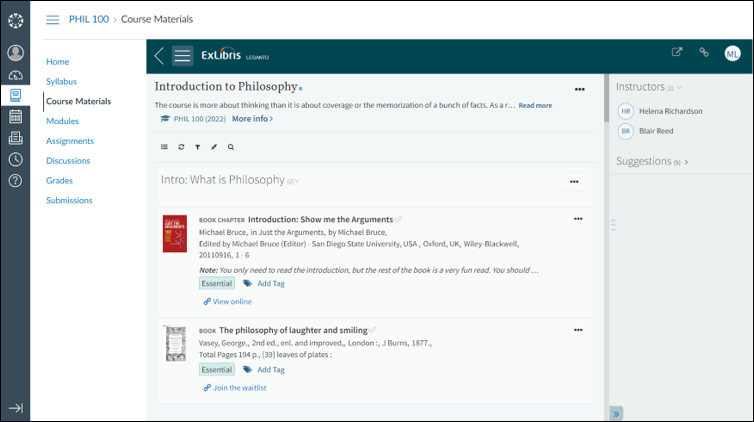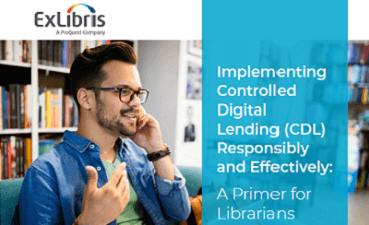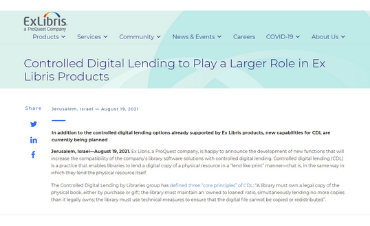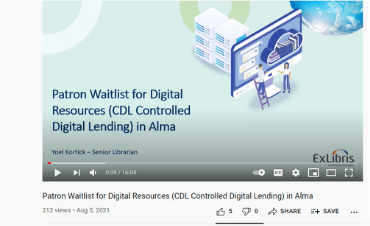
Core Principles of CDL
CDL has three core principles, see our whitepaper for more information on this, according to the Controlled Digital Lending group: A library must own a legal copy of the physical book, either by purchase or gift. The library must maintain an equal “owned to loaned” ratio, simultaneously lending no more copies than it legally owns. (If a library owns three print copies of a book, it could lend no more than two physical and one digital copy at a time, or one physical and two digital copies, and so on.) The library should use technical measures to prevent the digital file from being copied or redistributed.

Our vision
Ex Libris has outlined our vision for Controlled Digital Lending in a recently published whitepaper ‘Implementing Controlled Digital Lending (CDL) Responsibly and Effectively: A Primer for Librarians’ which you can access from our website. Within the whitepaper you will learn much more about CDL, what benefits it can bring to librarians and in what ways it will be integrated into Ex Libris’ products in the future. Ex Libris is committed to copyrights rules and regulations and is working with libraries to make sure they continue and comply with copyright rules and regulations.


Alma Digital
Alma supports Controlled Digital Lending flows by limiting number of concurrent users accessing a digital resource, maintaining an owned-to-loaned ratio of the original print version. Advanced workflows for managing patron waitlists for digital material, such as course resources, including customizable notifications throughout the process, can be managed as part of the access rights control. Watch the video here.

Leganto: Controlled Digital Lending for Course Materials
Libraries often rely on print course reserves to deliver affordable and equitable course materials. Even with the shift to purchasing electronic resources, libraries are still required to provide digital access to course resources that are either out of print or unavailable electronically.
With Leganto, libraries can make print course reserves seamlessly available to students within the learning management system (along with all other course materials) and manage the workflows associated with developing and supporting a CDL program for course materials.
Learn more about Controlled Digital Lending for Course Materials in this demo.


Advisory Group
Ex Libris, together with our community of customers, has formed an advisory group to help guide the development of new features and capabilities within our fully integrated suite of cloud-based solutions to support CDL in an ethical and responsible manner without infringing on copyright. The goal is that libraries have the flexibility to implement this model in a way that best suits their needs.

Future plans
We are working to integrate Controlled Digital Lending into our resource sharing platform Rapido, to allow our partners to conduct interlibrary loans of digital copies instead of lending the physical copy in a controlled way. You can read more about Rapido here.
Ex Libris is also currently working on enabling general circulation loans via CDL. This will allow patrons to borrow certain books from the library in a digital format helping libraries serve their patrons and make accessible to them resources within the limits of copyright rules and regulations. See our explainer video for more information.




